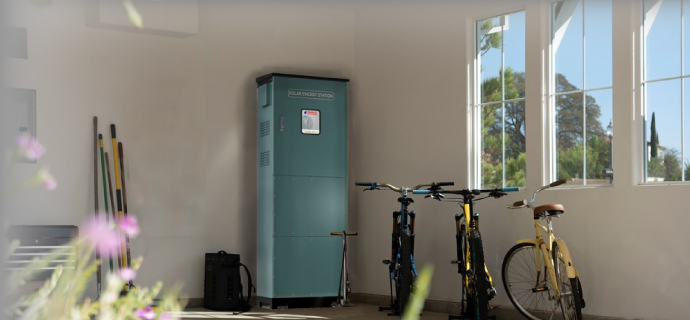Relay encoding table according to ANSI. Normally, we choose the protection relays according to the protection function, such as overcurrent protection relay, earth fault relay, leakage current protection relay, overvoltage protection relay, undervoltage protection relay, relay phase loss protection, phase reversal protection relay, low frequency protection relay, over frequency protection relay, motor rotor lock protection relay…
However, in some technical drawings, the function of protective relays is often denoted by numbers, for example 50, 50N, 51, 51N. To choose the right relay according to these drawings, we must understand the meaning of these relay symbol parameters. Normally, the relays with the above numbers will comply with the notation of the relay name table according to ANSI as follows:
- 01 – Master Element
- 02 – Time Delay Starting or Closing Relay
- 03 – Checking or Interlocking Relay
- 04 – Master Contactor
- 05 – Stopping Device
- 06 – Starting Circuit Breaker
- 07 – Rate of Change Relay
- 08 – Control Power Disconnecting Device
- 09 – Reversing Device
- 10 – Unit Sequence Switch
- 11 – Multi-function Device
- 12 – Overspeed Device
- 13 – Synchronous-speed Device
- 14 – Underspeed Device
- 15 – Speed – or Frequency, Matching Device
- 16 – Data Communications Device (see note 5)
- 17 – Shunting or Discharge Switch
- 18 – Accelerating or Decelerating Device
- 19 – Starting to Running Transition Contactor
- 20 – Electrically Operated Valve
- 21 – Distance Relay
- 22 – Equalizer Circuit Breaker
- 23 – Temperature Control Device
- 24 – Volts Per Hertz Relay
- 25 – Synchronizing or Synchronism-Check Device
- 26 – Apparatus Thermal Device
- 27 – Undervoltage Relay
- 28 – Flame Detector
- 29 – Isolating Contactor or Switch
- 30 – Annunciator Relay
- 31 – Separate Excitation Device
- 32 – Directional Power Relay
- 33 – Position Switch
- 34 – Master Sequence Device
- 35 – Brush-Operating or Slip-Ring Short-Circuiting Device
- 36 – Polarity or Polarizing Voltage Devices
- 37 – Undercurrent or Underpower Relay
- 38 – Bearing Protective Device
- 39 – Mechanical Condition Monitor
- 40 – Field (over/under excitation) Relay
- 41 – Field Circuit Breaker
- 42 – Running Circuit Breaker
- 43 – Manual Transfer or Selector Device
- 44 – Unit Sequence Starting Relay
- 45 – Abnormal Atmospheric Condition Monitor
- 46 – Reverse-phase or Phase-Balance Current Relay
- 47 – Phase-Sequence or Phase-Balance Voltage Relay
- 48 – Incomplete Sequence Relay
- 49 – Machine or Transformer, Thermal Relay
- 50 – Instantaneous Overcurrent Relay
- 51 – AC Inverse Time Overcurrent Relay
- 52 – AC Circuit Breaker
- 53 – Exciter or DC Generator Relay
- 54 – Turning Gear Engaging Device
- 55 – Power Factor Relay
- 56 – Field Application Relay
- 57 – Short-Circuiting or Grounding (Earthing) Device
- 58 – Rectification Failure Relay
- 59 – Overvoltage Relay
- 60 – Voltage or Current Balance Relay
- 61 – Density Switch or Sensor
- 62 – Time-Delay Stopping or Opening Relay
- 63 – Pressure Switch
- 64 – Ground (Earth) Detector Relay
- 65 – Governor
- 66 – Notching or Jogging Device
- 67 – AC Directional Overcurrent Relay
- 68 – Blocking or “Out-of-Step” Relay
- 69 – Permissive Control Device
- 70 – Rheostat
- 71 – Liquid Level Switch
- 72 – DC Circuit Breaker
- 73 – Load-Resistor Contactor
- 74 – Alarm Relay
- 75 – Position Changing Mechanism
- 76 – DC Overcurrent Relay
- 77 – Telemetering Device
- 78 – Phase-Angle Measuring Relay
- 79 – AC Reclosing Relay
- 80 – Flow Switch
- 81 – Frequency Relay
- 82 – DC Reclosing Relay
- 83 – Automatic Selective Control or Transfer Relay
- 84 – Operating Mechanism
- 85 – Communications,Carrier or Pilot-Wire Relay
- 86 – Lockout Relay
- 87 – Differential Protective Relay
- 88 – Auxiliary Motor or Motor Generator
- 89 – Line Switch
- 90 – Regulating Device
- 91 – Voltage Directional Relay
- 92 – Voltage and Power Directional Relay
- 93 – Field Changing Contactor
- 94 – Tripping or Trip-Free Relay
- 95 – For specific applications where other numbers are not suitable
- 96 – For specific applications where other numbers are not suitable
- 97 – For specific applications where other numbers are not suitable
- 98 – For specific applications where other numbers are not suitable
- 99 – For specific applications where other numbers are not suitable
- AFD – Arc Flash Detector
- CLK – Clock or Timing Source
- DDR – Dynamic Disturbance Recorder
- DFR – Digital Fault Recorder
- ENV – Environmental Data
- HIZ – High Impedance Fault Detector
- HMI – Human Machine Interface
- HST – Historian
- LGC – Scheme Logic
- MET – Substation Metering
- PDC – Phasor Data Concentrator
- PMU – Phasor Measurement Unit
- PQM – Power Quality Monitor
- RIO – Remote Input/Output Device
- RTU – Remote Terminal Unit/Data Concentrator
- SER – Sequence of Events Recorder
- TCM – Trip Circuit Monitor
- SOTF – Switch On To Fault

